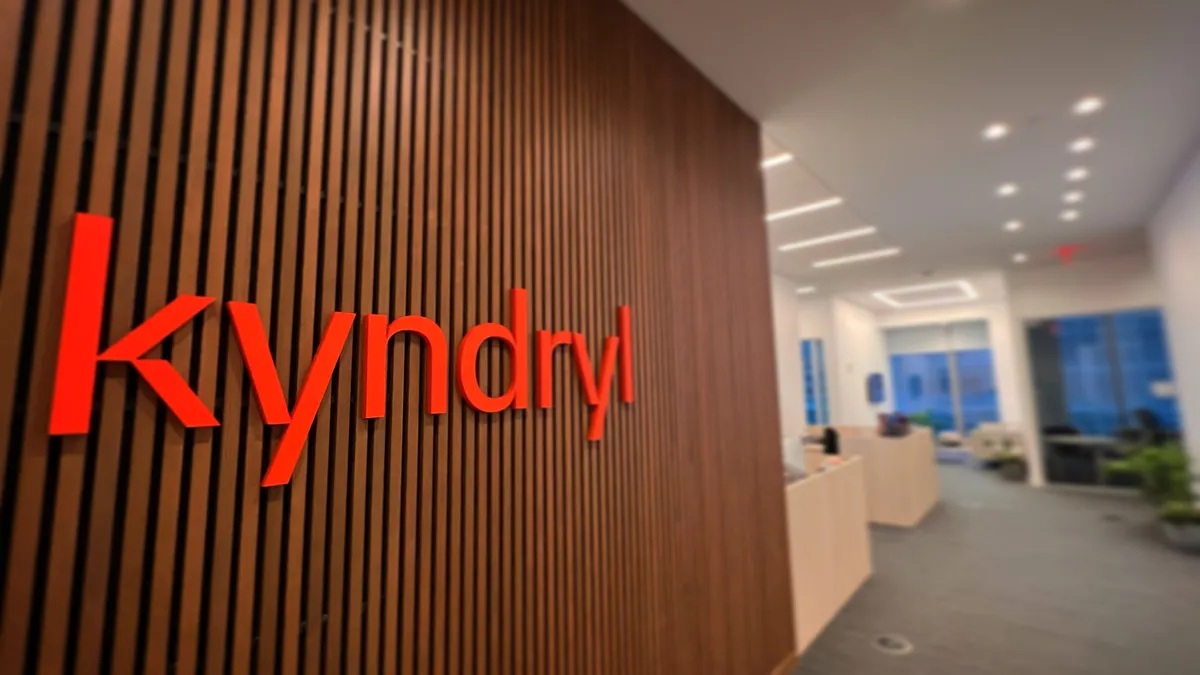Companies are sitting in a two-sun solar system. And the suns are Microsoft Azure and Amazon Web Services.
It became very clear to research firm ETR that the cloud vendor space was starting to look remarkably like the planet of Tatooine in "Star Wars," orbiting the Microsoft and Amazon suns, according to Thomas DelVecchio, founder and CEO of ETR, in an interview with CIO Dive.
How hot? How bright? Microsoft and Amazon were the favored vendors for 16 of the 29 products and services in projected IT spend, according to ETR's survey data of more than 800 CIOs and other business leaders.
The survey gives ETR a real-time analysis of where CIOs are most likely to allocate funds. More than one-fifth of respondents, 21%, indicate they will implement a new adoption of Microsoft or AWS for a business purpose. Companies are adopting additional Microsoft and Amazon services like cloud computing, container orchestration, or artificial intelligence.
Microsoft and Amazon's dominance comes from the ability to "constantly iterate and compress the competitive distance between themselves and the pure breeds," as in other SaaS offerings or cloud-enabled services, said DelVecchio.
Amazon was the first to successfully commercialize the cloud and make it desirable. Microsoft quickly followed and is orbiting close to AWS.
ETR has expected Microsoft to eclipse Amazon in the cloud domain for the last several years but what surprised DelVecchio was Microsoft CEO Satya Nadella's ability to "do a good job at getting up to speed." DelVecchio also didn't expect that the legacy software company "would be the dominant enterprise cloud name by 2019 — and they are."
In a galaxy not too far away
Gartner's Magic Quadrant ranks AWS as its top cloud vendor, though the rise in the multicloud is allowing Microsoft and Google some market gains.
Microsoft established "this giant footprint" just behind AWS and over the last three to four years narrowed its focus on "the most valuable pockets either from mind share or wallet share" in the enterprise, according to DelVecchio.
By the end of 2019, ETR predicts Microsoft hosting the data of most Fortune 1,000 and larger enterprises for two reasons:
- AWS faces scrutiny from businesses across industries because of the vast reach of parent company, Amazon makes it a competitor. Retail, video streaming, grocery and healthcare are fields where Amazon has presence.
- The majority of large enterprises, including Fortune 100, 500, 1,000 and Global 2,000 are built on Microsoft. This homogeneous model allows Microsoft to transcend other enterprise IT vendors across markets.
Companies worry the data they have hosted on AWS could be used against them. Businesses across industries "realize they can become the Netflix that's challenged by Amazon Prime," said DelVecchio.
That fear has always been present, said DelVecchio, but in recent years, more potential AWS cloud customers have been vocal about their reservations.
Microsoft has worked this criticism into its marketing strategy. The company has been able to dispel concerns over subsidizing competition because it exists as a tech company.
Microsoft's guiding star
Vendor lock-in is a real threat for some enterprise customers, but growing economic concerns may trump lock-in fears. The trade imbalance with China or GDPR privacy regulations are influencing CIOs to make more conscious and selective vendor decisions.
Microsoft can bake in products to its existing bundles that are not necessarily mission critical, but appease the select employees that need them. Microsoft's business proposition also cuts down on costs.
Microsoft bundles are not always best in breed, "but the discounts in price versus pure play is justified," said DelVecchio. And, Microsoft will continue to iterate until its solutions are the strongest technologically.
Each time Microsoft introduces a new tool to the market, like its business intelligence software tool, Power BI, it helped make the company a leader in business analytics in the cloud.
Its debut simultaneously threatened other pure play data visualization companies, like Tableau.
The pure play companies that may have better products than Microsoft and Amazon may not feel the impact of these companies' presence now, but in three to four years, they might, according to DelVecchio. And customers know this.
Pure play vendors can offer a higher quality tool, but they have to grapple with Microsoft's ability to mature similar products. Customers are willing to delay buying costly new licenses because they are willing to evaluate the tools Microsoft can bundle for them.
And with such a gap in price between the two solutions, "who's going to care?" asked DelVecchio.
This is the superpower of Microsoft and Amazon.
The companies are able to essentially replicate solutions made by other providers and eventually eclipse them in price and effectiveness. What's scariest for niche vendors is that the companies "can do it to basically anybody," said DelVecchio.
Much of this direction comes from Nadella, who has guided Microsoft into "becoming more of what AWS has been," according to DelVecchio. The CEO foreshadowed the cloud-enabled world of software.
After all, Microsoft is a software company and the cloud is software.
Microsoft has "satisfied — I wouldn't say they've thrilled — they have satisfied enterprise customers more in the last five years" compared to 10 years ago, said DelVecchio.





















